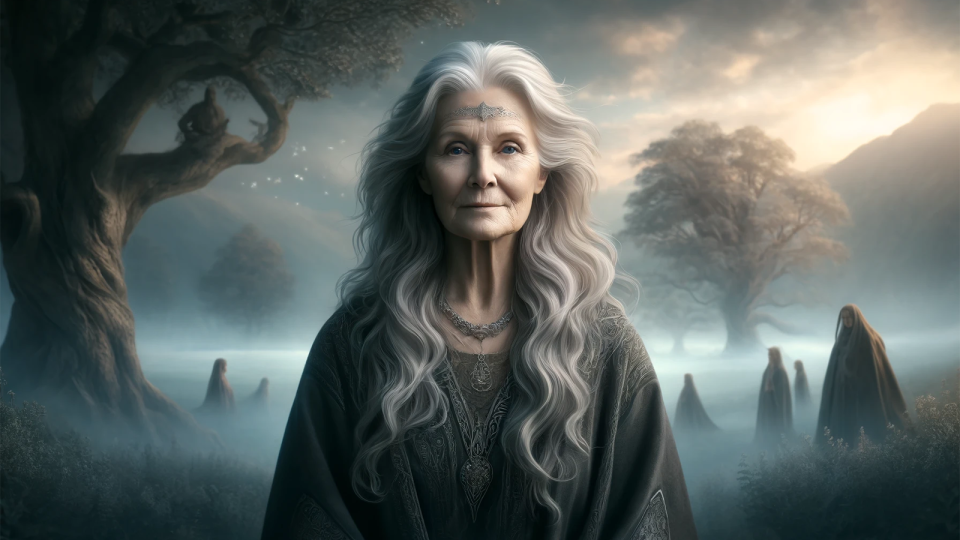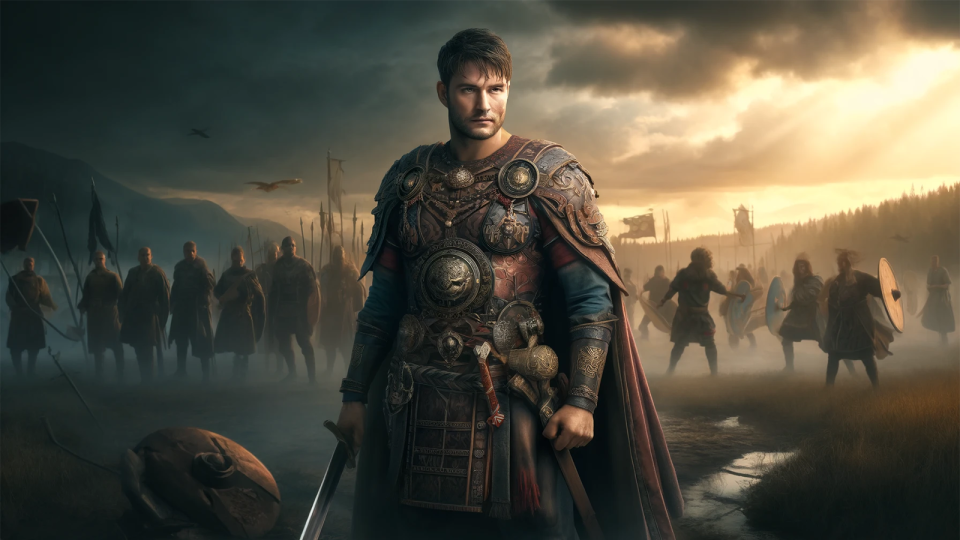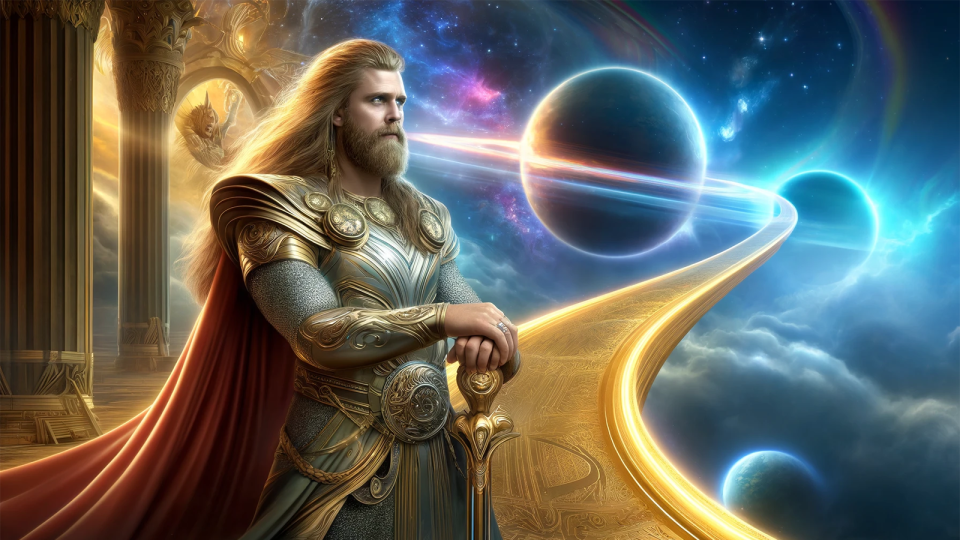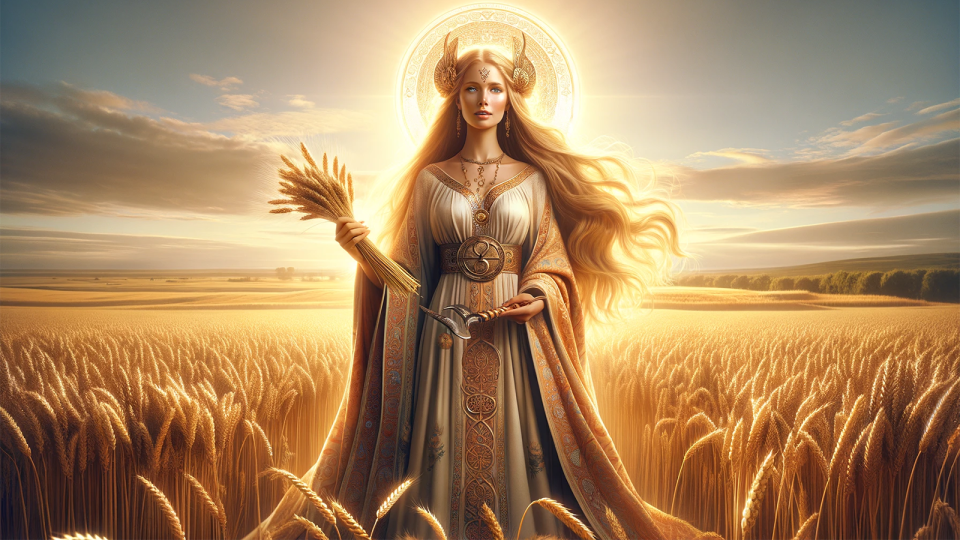Norse Mythology: Gods, Goddesses, Yggdrasil and More
Unlike monotheistic religions based on the belief in an omnipotent, all-powerful overseer god who judges actions and determines justice in the mortal world, in Norse mythology, gods and goddesses were powerful entities that experienced human flaws, trials and conflicts.
Stories of these supernatural beings told around fires or read from runes carved in rock helped these ancient peoples make sense of the world around them. Fierce warriors who believed their brave feats in battle would earn them a place in the halls of heaven spurred them to conquer new lands and shape history.
A Brief Overview of Norse Deities
Many Norse gods and goddesses appear in Stan Lee's famous 20th-century Marvel Comics and the globally popular film adaptations in the 2010s. However entertaining, these stories barely scratched the surface of the intricate tales and traditions of old Norse religion.
Although religious beliefs and traditions evolved across various regions in the Middle Ages, an underlying theme ties Norse deities together. Much like the Olympian-Titan war at the heart of Greek religion, internal and external conflicts of the Aesir gods set the stage for the Icelandic sagas.
Who Was the Most Powerful Norse God?
The Norse god Odin was king of all the gods and goddesses and the paramount deity who reigned on the throne of Asgard. This powerful god sacrificed an eye to see the future and hung from a tree for nine nights to become knowledgeable of all happenings in the nine realms of Norse cosmology.
Odin was known as the all-father, or supreme deity, who decided on matters of war and death. Any warrior who died bravely in battle was ushered into his halls of Valhalla, where they feasted, fought and indulged in immortal splendor until the future Ragnarok signaled a cataclysmic end of days.
10 Important Norse Gods and Goddesses
Although Norse people may have had several other gods besides the Aesir gods of the Norse Pantheon, the following characters are some of the most universal deities among ancient pagan traditions.
1. Frigg

The mighty queen Frigg, Odin's wife, was a very protective mother figure who acted as the primary mediator in conflicts between Norse goddesses and gods. Aside from solving familial squabbles among the Aesir gods, Odin's wife was also the patron deity of motherhood, marriage and prophecy.
2. Thor

Marvel Universe superhero and most favored of Odin's sons, Norse god Thor was the golden boy of pagan religion. This popular god of lightning and thunder wielded Mjölnir, a powerful hammer that gave him the strength to slay giants and protect both Asgard and the realm of men, Midgard.
3. Loki

Any fan of Marvel Thor movies will be familiar with the mischievous god/antihero, Loki. In old Norse religion, this notorious trickster god was a shapeshifter who used manipulation to either help or hinder the other gods and goddesses on their respective quests.
Although a revered figure of intellect, the trickster god fell out of favor with other members of the Norse pantheon when he engineered the death of the beloved god Baldr. In one of the saddest Norse myths, he tricked the blind god Hother into killing Baldr with a weaponized branch of mistletoe.
The gods then forced the anthropomorphized plant to promise never to harm a living thing again, resulting in the plant's connection to peace and love that remains today. People engage in this old Norse tradition every year when they hang it above doorways to encourage a kiss during the holidays.
4. Freya

The venerable Norse goddess Freya was a golden-haired beauty associated with fertility, military strategy and magical powers of clairvoyance called Seiðr. Her unyielding nature granted her the title of captain of the Valkeries, and she reigned over Fólkvangr, an alternative resting place for dead soldiers.
5. Baldr

Baldr was one of the most beloved figures in Norse paganism. This son of Odin and Frigg was the god of light (similar to the Greek god Apollo) and was nearly invincible to the point that other gods would jokingly throw things at him, knowing that he would be unharmed.
This jesting led to one of the great tragedies in the old Norse religion when Loki deceives the other gods into playing a game that led to Baldr's untimely and unexpected death.
All the gods turned against Loki after the betrayal since Baldr's demise signaled the beginning of the end of every world in Norse cosmology.
6. Hel

Living in Northern Europe during the Middle Ages was a daily life-and-death struggle. Therefore, many of the old Norse gods and goddesses had a role in protecting the souls of the dead. How many gods took on this grave responsibility depends on various interpretations of ancient texts.
Most Norse gods and goddesses maintained a special place for soldiers who died in battle, but common folk who lived quiet lives were shepherded toward the Norse underworld Helheim, a peaceful final resting place overseen by the old Norse goddess Hel.
Hel was the daughter of Loki and a benevolent deity who ruled over her kingdom in Nifilheim. However, modern interpretations may suggest that instead of being the only goddess responsible for the underworld, she could be a personification of the realm itself.
7. Týr

Týr was the patron god of warriors and mythological heroes. However, his role in Norse religion was eventually supplanted by more favored gods and goddesses like Thor and Freya.
Týr's real claim to fame is chronicled in his role during the imprisonment of Fenrir, a monstrous wolf prophesized to assist in Odin's death and the subsequent destruction of Ragnarok. While chaining the massive canine, Týr sacrificed his hand but succeeded in delaying the end of the world.
8. Freyr

Freyr was the Norse god of peace and good harvests. He was closely related to horse cults and held a special position in the early generations of Swedish royalty, who often claimed him as their descendant and divine connection to the throne.
Freyr was famous for riding a magical dwarf-made boar and captaining the legendary ship Skíðblaðnir, which always caught favorable winds and could be folded up into a portable pouch.
9. Heimdall

Heimdall was the ever-watching guardian of Asgard and the other nine realms of Norse cosmology. The "white god" rarely slept as he oversaw the Bifrost rainbow bridge connecting heaven, Earth and the underworld.
10. Sif

The goddess Sif was a testament to the age-old saying, "Behind every great man, there is a great woman." She was the golden-haired wife of the Norse god Thor, the patron deity of grain and fertility. She also mothered the Norse god Ull, the god of archery, skiing and single combat.
4 More Supernatural Beings From Norse Mythology
No matter how many Norse gods ventured out to slay giants, explore the elf-realm, or court young human maidens, the world of old Norse mythology would be less vivid and epic without the many mythical creatures and monuments that added magic and wonder to the legends.
Yggdrasil
The "world tree" was a central component of the Norse creation myth. It was a giant ash that held the nine worlds in the epicenter of Norse cosmology. Branches of the world tree included Midgard (Earth), Asgard (heaven), Alfheim (elf realm), Nidavellir (dwarf realm), and the vast wilderness of Jotunheim (giants' realm).
Fenrir
Few other beings from Norse myths possess more destructive qualities than the monstrous wolf Fenrir. Led by their father, Loki, Fenrir and his world-serpent brother, Jörmungandr, play key roles in the prophecies of Ragnarok and the fall of the Aesir gods.
In Ragnarok's strange metaphor of balance and dichotomy, heroes and villains end up slaying each other in the final battle: Loki and Heimdall destroy one another on the Rainbow Bridge, Thor dies killing the world serpent, and Fenrir falls to Odin's son Vidarr, who avenges his father's death.
Huginn and Muninn
These two ravens, whose names translate to "thought" and "mind," respectively, are integral to Odin's ability to gather news of world events. Some scholars interpret the mythical birds as icons of shamanic practices in which a person enters a trance to project their thoughts outward to gain enlightenment.
Who Were the Norse People?
Norse culture was a rich and diverse tradition developed by pre-Christian, North Germanic peoples between the eighth and 11th centuries C.E. This "Viking age" birthed a formidable society of seafaring explorers and brutal warriors who dominated coastlines across Northern Europe and beyond.
When thinking about the Viking age, people often rely on pop culture representations from Hollywood that depict these ancient people as bloodthirsty barbarians who pillaged helpless villages. Although there are seeds of truth in this, the Norse were not a monolith, and neither were the gods they worshipped.
Norse society was a complex hierarchical structure comprised of royal classes, merchants, priests, farmers and enslaved people. Future archaeological discoveries will hopefully unlock numerous mysteries about this enigmatic culture, but several findings have given scientists a glimpse into their religious practices.
Norse Mythology and Religious Practices
Modern knowledge of Norse mythology and religious practices stems from an oral tradition of stories passed down from generation to generation since remnants of the old Norse runic alphabet are sparse or have washed away after centuries of weather.
However, a 13th-century work believed to have been written by scholar Snorri Sturluson provides the most detailed account of the number of Norse gods and goddesses and their roles in the wider Norse cosmology.
These Icelandic sagas, known as the "Prose Edda" or "Poetic Edda," provided an account of the adventures of essential members of the Norse pantheon and information that enlightened researchers on the nuances of skaldic poetry and Norse paganism.
Historians and anthropologists have since learned that the old Norse religion provided a societal framework for agrarian people who took root in harsh northern environments. Although seemingly brutal today, old Norse traditions of war and sacrifice were essential in their connection to the gods and nature.
Now That's Human
Oral stories from old Norse mythology were meant to entertain and amuse people as they sat around the fire during harsh winters in an unforgiving environment. Historians still argue on interpretations of the few primary sources that exist. Even then, many of the legends are vague, standalone tales of heroes succeeding and failing in an extremely human fashion. After reading Neil Gaiman's Norse Mythology, you can appreciate that, unlike other mythologies that attempt to enchant readers by holding heroes on a superior echelon, Norse mythology highlights flaws and imperfections — a reminder that no one is perfect, not even the gods.
Original article: Norse Mythology: Gods, Goddesses, Yggdrasil and More
Copyright © 2024 HowStuffWorks, a division of InfoSpace Holdings, LLC, a System1 Company


